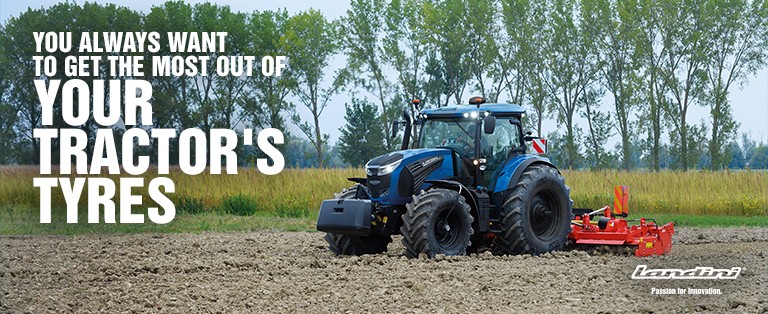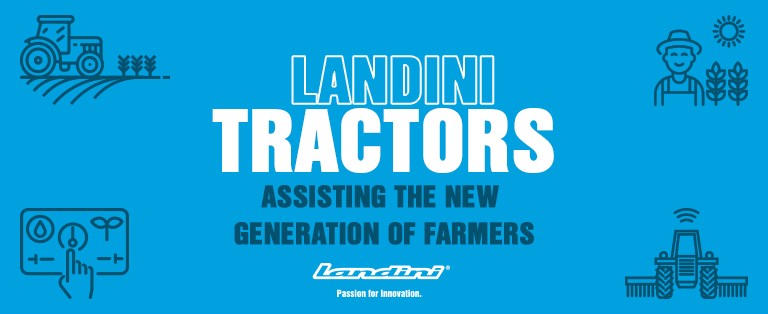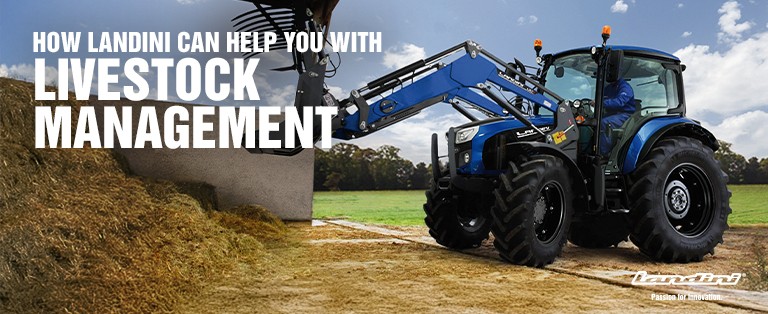YOU ALWAYS WANT TO GET THE MOST OUT OF YOUR TRACTOR’S TYRES.

Table of contents:
They’re an extremely important “accessory”
The same high levels of care and attention that we dedicate to our cars’ tyres must also be devoted to those on our tractors. Tractor tyre management is of fundamental importance, with all of the relative activities being aimed at optimising their use, maximising their lifespan, and reducing consumption as much as possible. In fact, the correct use of the machine and its tyres, combined with regular maintenance, can provide for significant savings.
Tractor tyre characteristics
The first distinctive characteristic of tractor tyres is their load capacity, which is directly proportional to their width. The load capacity is directly related to the volume of air contained in the tyre, so a greater size means the possibility of using larger and heavier implements. Another typical characteristic is offered by the Improved Flexion (IF) and Very High Flexion (VF) tyre types. These tyres differ from the others in that they have flexible sidewalls, which flex more under heavier loads, thus increasing the tyre’s footprint. This allows the weight of the machine and its implements to be better distributed, thus preventing excessive soil compaction. Finally, it is important to be aware of other fundamental elements, such as the tyre size indications. A series of numbers and letters are indicated on the tyre itself, for example “600/65R28”. The first number refers to the tyre width in millimetres. The second number refers to the sidewall height, as a percentage of the width. Finally, the letter R indicates that the tyre is a “Radial” tyre, and the number that follows represents the rim diameter in inches.
How best to manage your tractor tyres
Like for the tractor itself, proper tyre management allows you to considerably extend the life of your tyres and, consequently, maximise the return on your investment. To begin with, one general rule of thumb is to moderate the tractor’s speed when driving on roadways, which are more abrasive than the terrain in the fields, as well as to accelerate smoothly. This small precaution can greatly reduce tyre wear. Next, the most important management aspect concerns the tyre pressure. First of all, it should be noted that there is no such thing as a pressure level that’s suitable for every type of surface, and the tyre pressure must be adjusted based on the type of terrain you’re moving on. A higher pressure level is generally more appropriate on asphalt roads, in order to avoid excessive tread wear and to prevent the hard abrasive surface from damaging the inside. The pressure level should generally be reduced, on the other hand, when the tractor is operating in the fields. This is because a highly inflated tyre has a reduced ground contact surface, which means less traction, increased rolling resistance, and a greater risk of skidding. All this leads to greater soil compaction, which is very detrimental to crop yields and field productivity. Another important precaution for optimal tyre management does not regard the tyres themselves, but rather the loads carried. Whenever possible, it is best to reduce the loads, and to distribute them better so that they weigh evenly on all 4 tyres, as this allows for uniform wear. It is also very useful to switch the tyre positions, especially if you notice that those on one side are wearing faster than those on the other side. These are just a few tips to be kept in mind when it comes to managing your tractor’s tyres. Landini can help with this, thanks to its service, spare parts and technical support! Finally, for Landini’s high-powered tractors, such as the Serie 7, there is now an extremely useful option available for ensuring greater efficiency and effectiveness in the transition from road to field: the EazyGrip remote tyre inflation system, which can be conveniently operated from the Data Screen Manager. The system controls pressure and stops automatically when the pre-set level is reached, reducing soil compaction, fuel consumption, tyre wear and optimising soil productivity.



